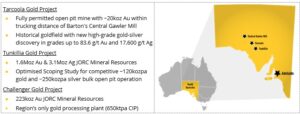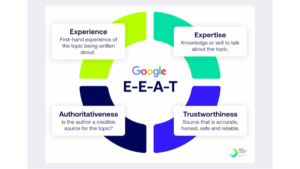Ridgway, Colorado / Syndication Cloud / July 07, 2025 / TrafficForge
Key Takeaways
- Small businesses can increase website visitors by 55% through consistent content marketing strategies.
- Content marketing generates 3x more leads per dollar while costing 62% less than traditional marketing methods.
- Creating high-quality, SEO-optimized content establishes your brand as an industry authority.
- Developing content that addresses customer pain points builds trust and credibility with your audience.
- A multi-channel content approach helps maximize reach and engagement across different platforms.
Content Marketing: Your Small Business’s Growth Driver
In today’s online world, getting your small business noticed isn’t just about having a website—it’s about strategically positioning yourself where potential customers are looking. Content marketing stands out as one of the most powerful and cost-effective ways to achieve this visibility. has seen firsthand how small businesses transform their online presence through strategic content creation, turning casual browsers into loyal customers.
Content that conveys consistent brand messaging across multiple platforms helps you boost awareness of your business, build trust among potential and current customers or clients, and improves your search engine rankings. But what exactly constitutes content and how can you put this strategy to work for you?
Content marketing encompasses everything your business creates to attract and retain customers—from blog posts and videos to webinars, FAQs, articles, and ebooks. It’s not just about creating content for content’s sake; it’s about crafting valuable information that addresses your audience’s needs while positioning your business as the solution.
The ROI of Content Marketing: Hard Numbers
For small business owners considering marketing strategies, the bottom line matters. Content marketing delivers impressive returns that make it impossible to ignore:
1. Content marketing gets 55% more website visitors
Businesses that consistently publish blog posts and other valuable content see a significant boost in website traffic. This isn’t just random traffic—it’s often highly targeted visitors who are actively searching for information related to your products or services.
2. 70% of people prefer content to traditional ads
Today’s consumers are increasingly skeptical of traditional advertising. They’re looking for authentic, helpful information rather than sales pitches. When you provide valuable content, you meet this preference head-on, building trust in the process.
3. Generates 3x more leads per dollar than other marketing methods
Compared to traditional marketing approaches, content marketing delivers triple the leads for the same investment. This remarkable efficiency comes from content’s ability to attract prospects at various stages of the buying journey.
4. Costs 62% less than traditional marketing
Not only does content marketing generate more leads, but it does so at a significantly lower cost. This cost-effectiveness makes it particularly valuable for small businesses with limited marketing budgets.
Proven Content Strategies That Boost Visibility
Now that you understand the value of content marketing, let’s see how to implement it effectively for your small business:
1. Create SEO-optimized content targeting your niche keywords
Search Engine Optimization (SEO) is the backbone of your content strategy. Research keywords relevant to your business and create content that addresses what your audience is actively searching for. This helps your content rank higher in search results, making it more likely to be discovered by potential customers.
For example, if you run a local bakery, you might target keywords like “best gluten-free cakes in [your city]” or “custom birthday cakes near me.” Start by identifying primary keywords with good search volume but manageable competition. Then expand to specific phrases that might have lower search volume but higher conversion potential.
2. Develop a consistent blog posting schedule
Consistency is key to content marketing success. Establishing a regular publishing schedule helps build audience expectations and gives search engines fresh content to index. Whether you publish weekly, bi-weekly, or monthly, stick to your schedule to maintain momentum.
Create a content calendar that aligns with your business goals and seasonal trends. A landscaping company might focus on spring planting tips in March and April, summer lawn care in June and July, and fall cleanup in September and October. Plan topics in advance to avoid scrambling for ideas, and batch-create content when possible to maintain your publishing cadence even during busy periods.
3. Diversify your content formats (videos, infographics, guides)
Different audience segments consume content differently. While some prefer reading blog posts, others might engage more with videos or visual content. By , you can reach a broader audience and keep your existing audience engaged.
Consider creating:
- How-to videos demonstrating your product or service
- Infographics that simplify complex information
- Comprehensive guides that establish your expertise
- Podcasts discussing industry trends and challenges
- Case studies showcasing customer success stories
4. Distribute content strategically across platforms
Creating great content is only half the battle—you also need to ensure it reaches your target audience. Different platforms serve different purposes and audience segments:
Share blog posts on LinkedIn for professional audiences. Use Instagram for visual content and behind-the-scenes glimpses. Use Twitter/X for quick tips and industry news. Create YouTube videos for in-depth tutorials and demonstrations. Use email newsletters to nurture existing leads and customers.
5. Focus on solving customer problems, not selling
Successful content marketing addresses customer pain points and offers solutions without overtly pushing for a sale. This approach builds trust and positions your business as a knowledgeable advisor rather than just another vendor.
Identify common questions and challenges your customers face. A financial advisor might create content about retirement planning concerns, while a pet groomer could address anxiety in pets during grooming sessions. Create content that directly addresses these issues, demonstrating your understanding of their needs and your ability to solve their problems.
Climbing Search Engine Rankings Through Content
A well-executed content strategy can significantly improve your search engine rankings, making your business more visible to potential customers. Here’s how to optimize your content for search engines:
1. Keyword research and implementation techniques
Effective keyword implementation goes beyond simply adding your target phrases. Focus on creating value-driven content that naturally incorporates your keywords. Include them in strategic locations like:
- Page titles and headings
- First paragraph of content
- Image alt tags
- Meta descriptions
- URL structure
Most importantly, ensure your content completely addresses the intent behind the keyword—what users are actually looking for when they search that term.
2. On-page SEO optimization best practices
Optimizing individual pages involves several technical elements that signal relevance to search engines:
Create compelling meta titles (under 60 characters) and descriptions (under 160 characters). Use header tags (H1, H2, H3) to structure your content logically. Optimize image file names and alt text. Ensure your page loads quickly by compressing images and minimizing code. Make your content mobile-friendly and include internal links to other relevant pages on your site.
3. Creating content clusters around core topics
The content cluster model helps establish topical authority by organizing content around central themes relevant to your business. For instance, a home services company might create a main page about “Home Winterization” with related content about insulation, pipe protection, heating system maintenance, and weather-stripping.
This approach signals to search engines that your site has deep expertise in specific areas, potentially boosting your rankings for related searches.
Multi-Channel Traffic Generation
To maximize the impact of your content, you need a strategic approach to distribution across multiple channels.
Blog optimization for maximum visibility
Your blog serves as the content hub for your entire marketing ecosystem. Optimize it for both search engines and readers by organizing content into clear categories that align with customer interests and implementing a responsive layout that works well on all devices.
Include clear calls-to-action that guide readers toward conversion and enable social sharing to extend your content’s reach. Regularly audit and update your existing blog content to ensure it remains accurate, relevant, and optimized for current search engine algorithms.
Social media distribution techniques
Each social platform has its own content formats, audience expectations, and algorithmic preferences. Adapt your content strategy accordingly:
- Instagram: Share visually compelling images, stories, and short videos
- LinkedIn: Post industry insights, company updates, and professional achievements
- Facebook: Focus on community-building content and customer stories
- Twitter: Share quick tips, industry news, and engage in relevant conversations
Rather than trying to maintain a presence on every platform, concentrate your efforts on the channels where your target audience is most active.
Email newsletter strategies
Email remains one of the most effective channels for nurturing leads and driving conversions. Create value-driven newsletters that curate your best content for subscribers and provide exclusive insights not available on your public channels.
Segment your audience to deliver personalized content that speaks directly to different customer needs or interests. Measure engagement metrics like open rates, click-through rates, and conversions to continuously refine your email strategy.
Partnership and guest posting opportunities
Collaborations extend your reach to new audiences and build your authority through association. Consider guest posting on industry blogs with audiences similar to yours or co-creating content with complementary businesses.
These partnerships create mutual benefits where both parties gain exposure to each other’s audiences, essentially doubling your reach with minimal additional effort.
Start Creating Content That Drives Results Today
You already know your business is special. Now it’s time to get the word out.
Content marketing is one of the most powerful and cost-effective strategies available to small businesses today. By consistently creating valuable content that addresses your customers’ needs and showcases your expertise, you can increase your visibility, establish your authority, generate quality leads, and ultimately grow your business.
Agencies like TrafficForge help small businesses develop targeted content strategies that drive visibility and qualified traffic to grow your online presence.
TrafficForge
1167 County Road 23
Ridgway
Colorado
81432
United States

















